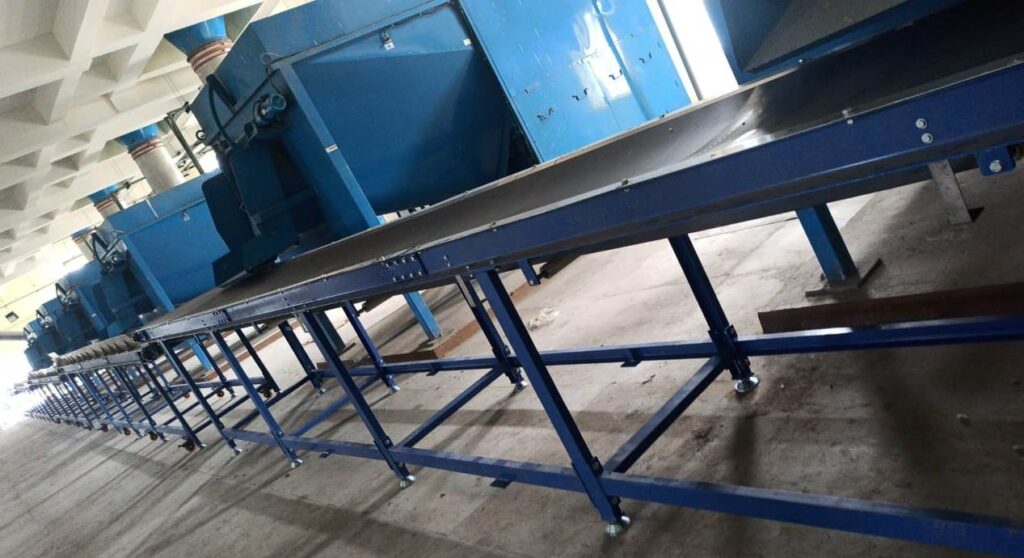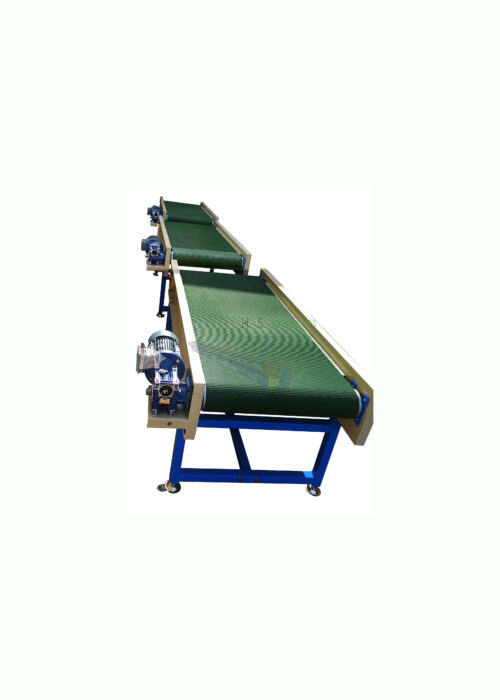A waste material handling conveyor is a type of conveyor system that is designed to transport various types of waste materials, such as solid waste, recyclables, and industrial waste, from one location to another.
The conveyor system can be customized to fit specific applications and requirements, such as the type of waste material, the distance to be covered, and the amount of waste to be transported. The waste material handling conveyor typically consists of a belt or chain that is driven by a motor, and a series of rollers or pulleys that guide the belt or chain along a specified path. The conveyor may also include additional features such as sorting and separating mechanisms, loading and unloading stations, and safety guards.
The purpose of a waste material handling conveyor is to transport waste materials efficiently and safely, reducing the need for manual handling and minimizing the risk of injury or contamination. This can help to improve the overall productivity of waste management processes and reduce the environmental impact of waste disposal.

The waste material handling conveyor can be designed to handle a variety of waste materials, including municipal solid waste, construction and demolition debris, industrial waste, and more. These conveyor systems can also be customized to meet the specific needs of the facility, including the size and weight of the materials being transported, the distance the materials need to travel, and the level of automation required.
Overall, waste material handling conveyors play an important role in the efficient and effective management of waste materials in a variety of settings.

- Heavy-duty construction: Waste material handling conveyors need to be strong enough to handle heavy loads and abrasive materials. They are often made from durable materials such as steel or reinforced rubber.
- Variable speed control: Conveyors that transport waste materials may need to operate at different speeds depending on the type of material being transported. Variable speed control allows operators to adjust the conveyor speed to suit their specific needs.
- Self-cleaning design: Waste materials can often be sticky or clingy, making them difficult to remove from conveyor belts. A self-cleaning design, such as a scraper or brush, can help keep the conveyor belt free of debris.
- Safety features: Waste material handling conveyors can be dangerous if not properly designed and operated. Safety features, such as emergency stops and safety guards, help protect workers from accidents.
- Customizable options: Every waste material handling conveyor system is unique, and different industries have different requirements. Customizable options, such as belt widths, angles, and conveyor lengths, allow for a customized solution for each application.
- Energy efficiency: Many waste material handling conveyors are designed to be energy-efficient, helping to reduce operating costs and minimize environmental impact.
- Easy maintenance: Maintenance is an essential part of keeping any conveyor system running smoothly. Features such as easy-access hatches and quick-release mechanisms make it easier for maintenance personnel to perform routine maintenance tasks.
